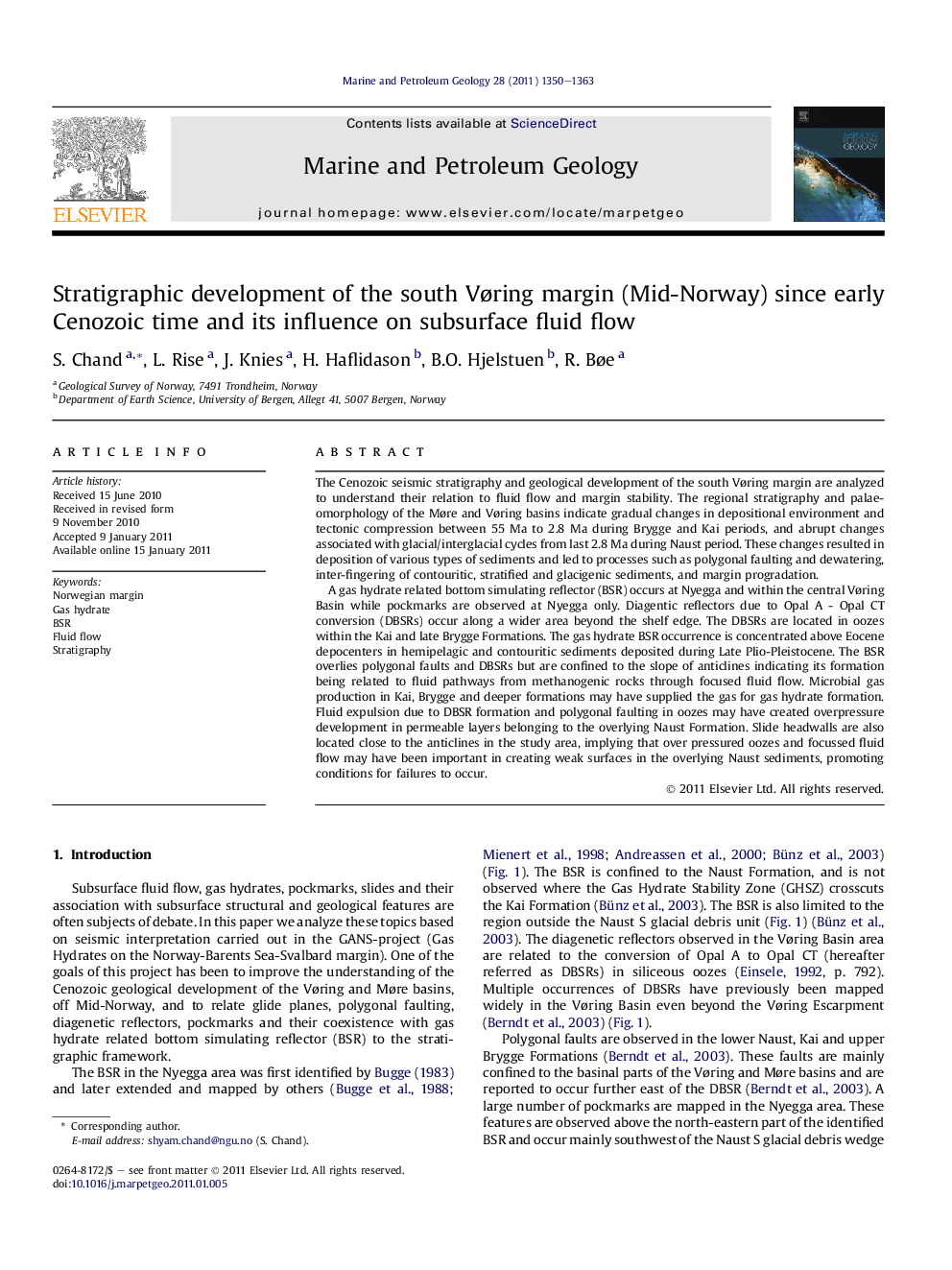| کد مقاله | کد نشریه | سال انتشار | مقاله انگلیسی | نسخه تمام متن |
|---|---|---|---|---|
| 4696023 | 1351651 | 2011 | 14 صفحه PDF | دانلود رایگان |

The Cenozoic seismic stratigraphy and geological development of the south Vøring margin are analyzed to understand their relation to fluid flow and margin stability. The regional stratigraphy and palaeomorphology of the Møre and Vøring basins indicate gradual changes in depositional environment and tectonic compression between 55 Ma to 2.8 Ma during Brygge and Kai periods, and abrupt changes associated with glacial/interglacial cycles from last 2.8 Ma during Naust period. These changes resulted in deposition of various types of sediments and led to processes such as polygonal faulting and dewatering, inter-fingering of contouritic, stratified and glacigenic sediments, and margin progradation.A gas hydrate related bottom simulating reflector (BSR) occurs at Nyegga and within the central Vøring Basin while pockmarks are observed at Nyegga only. Diagentic reflectors due to Opal A - Opal CT conversion (DBSRs) occur along a wider area beyond the shelf edge. The DBSRs are located in oozes within the Kai and late Brygge Formations. The gas hydrate BSR occurrence is concentrated above Eocene depocenters in hemipelagic and contouritic sediments deposited during Late Plio-Pleistocene. The BSR overlies polygonal faults and DBSRs but are confined to the slope of anticlines indicating its formation being related to fluid pathways from methanogenic rocks through focused fluid flow. Microbial gas production in Kai, Brygge and deeper formations may have supplied the gas for gas hydrate formation. Fluid expulsion due to DBSR formation and polygonal faulting in oozes may have created overpressure development in permeable layers belonging to the overlying Naust Formation. Slide headwalls are also located close to the anticlines in the study area, implying that over pressured oozes and focussed fluid flow may have been important in creating weak surfaces in the overlying Naust sediments, promoting conditions for failures to occur.
► The stratigraphic development and fluid flow at the south Vøring margin, midNorway is modelled.
► Large scale fluid expulsion occurred from silica diagenesis and polygonal faulting.
► Focusing of these fluids by anticlinal structures created overpressure environments and facilitated large slide events.
► Gas hydrates formed close to the peripheries of these anticlinal structures.
Journal: Marine and Petroleum Geology - Volume 28, Issue 7, July 2011, Pages 1350–1363